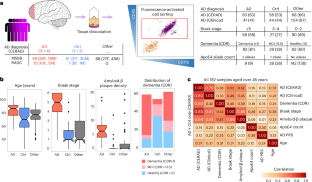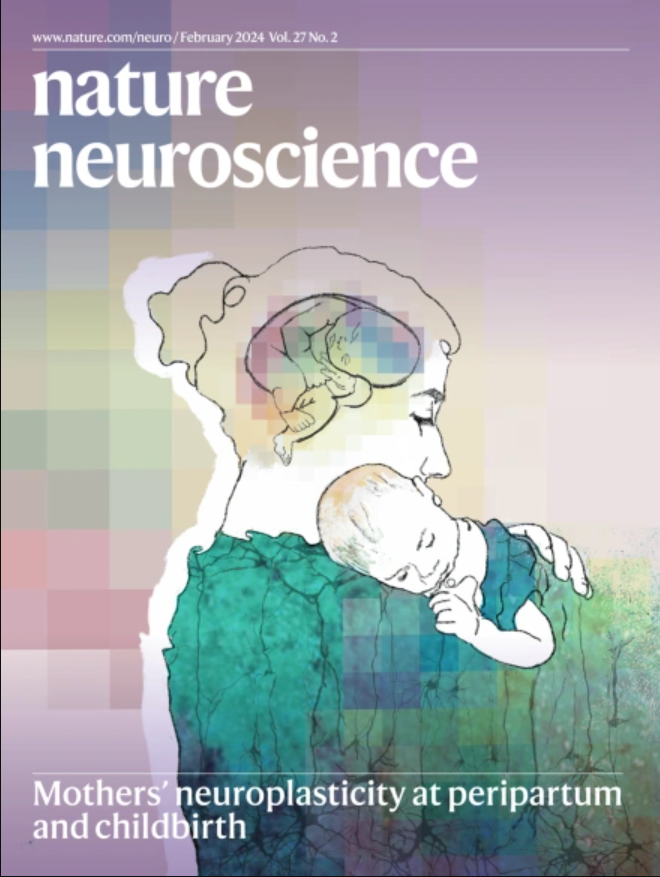Alzheimer’s disease transcriptional landscape in ex vivo human microglia
IF 20
1区 医学
Q1 NEUROSCIENCES
引用次数: 0
Abstract
Microglia are resident immune cells of the brain and are implicated in the etiology of Alzheimer’s disease (AD) and other diseases. Yet the cellular and molecular processes regulating their function throughout the course of the disease are poorly understood. Here, we present a transcriptional analysis of primary microglia from 189 human postmortem brains, including 58 healthy aging individuals and 131 with a range of disease phenotypes, such as 63 patients representing the full clinical and pathological spectra of AD. We identified changes associated with multiple AD phenotypes, capturing the severity of dementia and neuropathological lesions. Transcript-level analyses identified additional genes with heterogeneous isoform usage and AD phenotypes. We identified changes in gene–gene coordination in AD, dysregulation of coexpression modules and disease subtypes with distinct gene expression patterns. Taken together, these data further our understanding of the key role that microglia have in AD biology and nominate candidates for therapeutic intervention. Here the authors provide a comprehensive transcriptomic dataset of human primary microglia for Alzheimer’s disease and healthy aging. They identify dysregulation of immune-related microglial functions as a hallmark of disease.


阿尔茨海默病在离体人小胶质细胞中的转录景观
小胶质细胞是大脑的常驻免疫细胞,与阿尔茨海默病(AD)和其他疾病的病因有关。然而,在整个疾病过程中调节其功能的细胞和分子过程尚不清楚。在这里,我们对189名人类死后大脑的初级小胶质细胞进行了转录分析,其中包括58名健康的老年人和131名具有一系列疾病表型的患者,例如63名代表阿尔茨海默病的完整临床和病理谱的患者。我们确定了与多种AD表型相关的变化,捕获了痴呆和神经病理病变的严重程度。转录水平分析确定了具有异质异构体使用和AD表型的其他基因。我们发现了AD中基因协调的变化,共表达模块的失调以及具有不同基因表达模式的疾病亚型。综上所述,这些数据进一步加深了我们对小胶质细胞在阿尔茨海默病生物学中的关键作用的理解,并提名了治疗干预的候选药物。
本文章由计算机程序翻译,如有差异,请以英文原文为准。
求助全文
约1分钟内获得全文
求助全文
来源期刊

Nature neuroscience
医学-神经科学
CiteScore
38.60
自引率
1.20%
发文量
212
审稿时长
1 months
期刊介绍:
Nature Neuroscience, a multidisciplinary journal, publishes papers of the utmost quality and significance across all realms of neuroscience. The editors welcome contributions spanning molecular, cellular, systems, and cognitive neuroscience, along with psychophysics, computational modeling, and nervous system disorders. While no area is off-limits, studies offering fundamental insights into nervous system function receive priority.
The journal offers high visibility to both readers and authors, fostering interdisciplinary communication and accessibility to a broad audience. It maintains high standards of copy editing and production, rigorous peer review, rapid publication, and operates independently from academic societies and other vested interests.
In addition to primary research, Nature Neuroscience features news and views, reviews, editorials, commentaries, perspectives, book reviews, and correspondence, aiming to serve as the voice of the global neuroscience community.
 求助内容:
求助内容: 应助结果提醒方式:
应助结果提醒方式:


